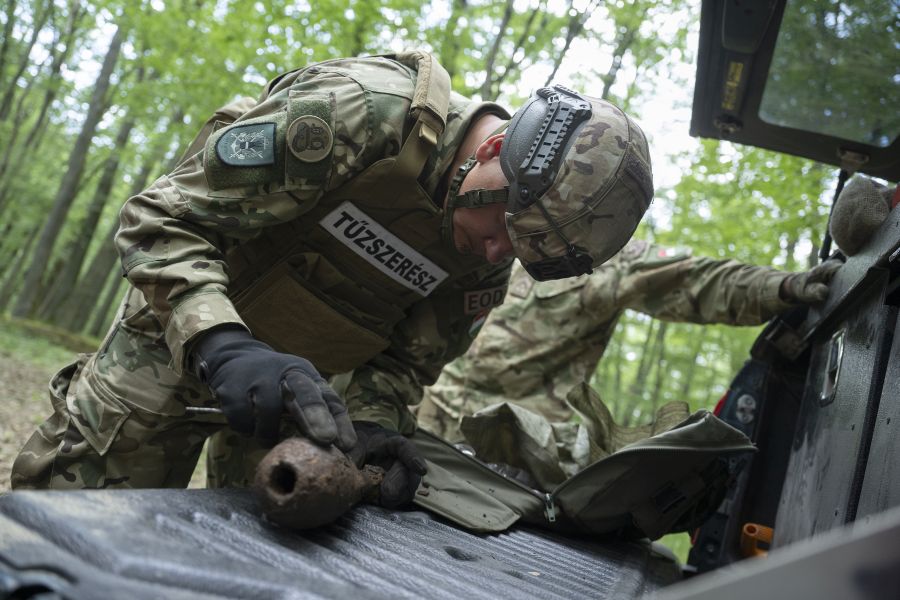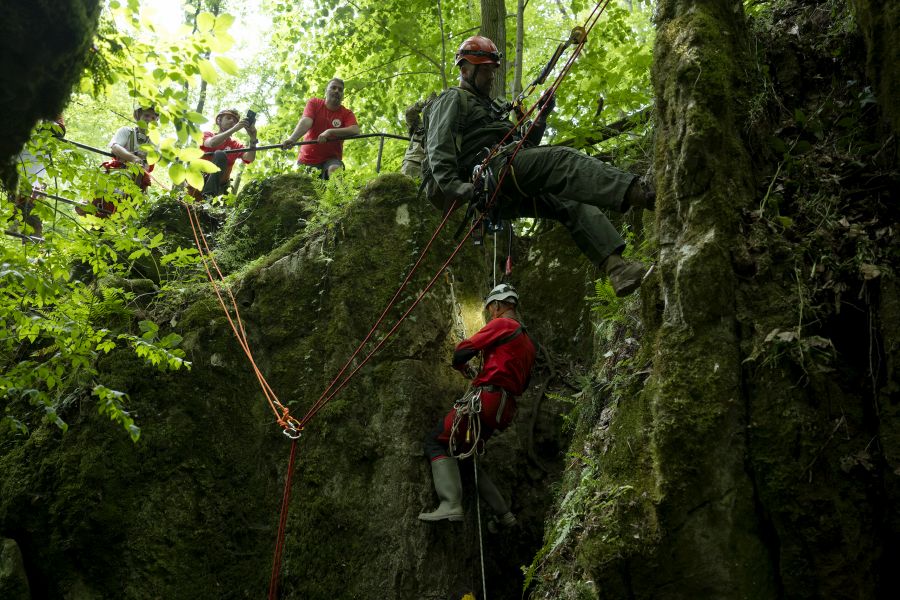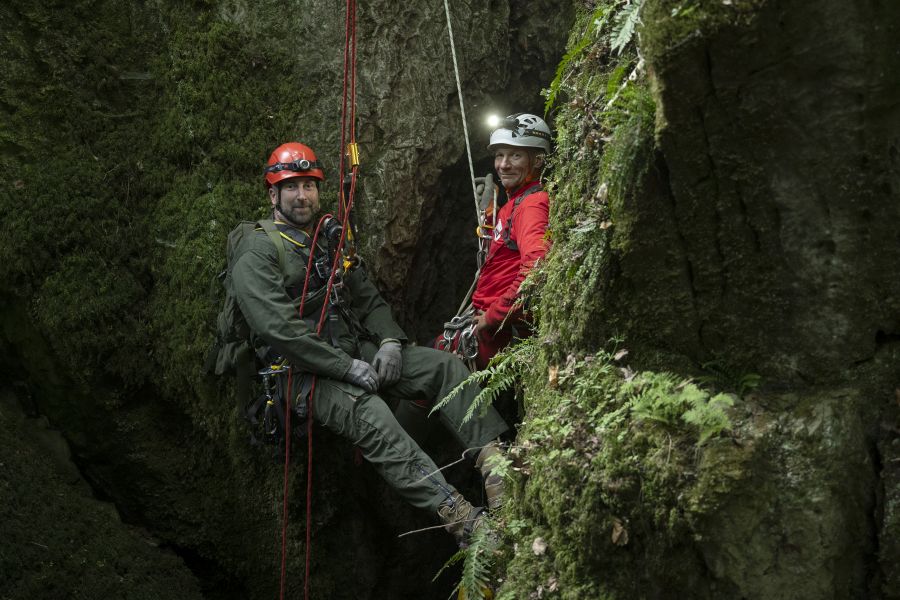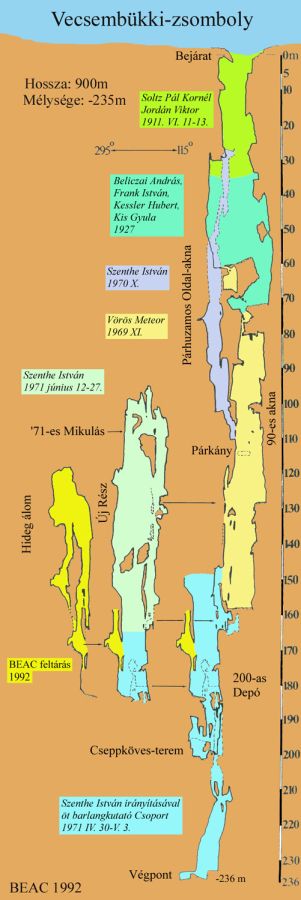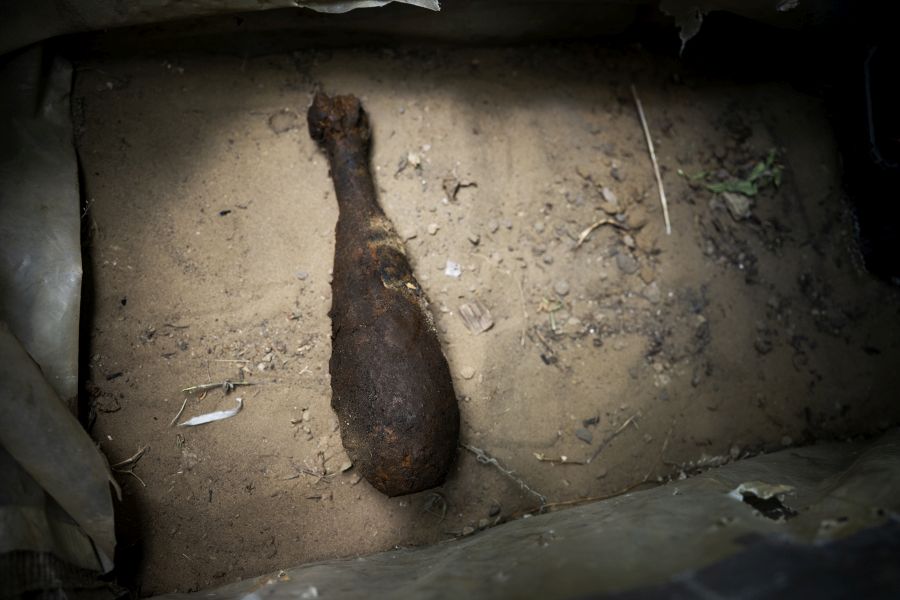During the Pentecost long weekend, another SRT training course took place at the Alsó-hegy, near Aggtelek. This technical focuses on expedition-style techniques and brought excitement not only because of the use of thin-rope methods
On Pentecost Sunday, right before squeezing through into the 90-meter shaft at the entrance of Vecsembükki-zsomboly, the following strange conversation took place:
– Look, what a weird-shaped stalactite in the rubble! Doesn’t it look like a bomb?
– Damn, that’s no stalactite, that must be some kind of grenade... Let’s leave everything and get the hell out of here—carefully!
Following this unpleasant discovery, the Aggtelek National Park Directorate and the police immediately closed the cave, revoked all issued tour permits, and notified the Hungarian Defence Forces’ bomb disposal unit about the explosive object.
As the situation developed, we soon got involved: we were asked to support the bomb squad’s work underground, specifically to assist a bomb disposal specialist in descending to the bottom of the entrance shaft to inspect the object—and, if possible, to help bring him back to the surface safely.
On the morning of June 19th, together with members of the ANPI Ranger Service and a five-person patrol from the Hungarian Defence Forces’ 1st Explosive Ordnance Disposal and Riverine Regiment, we made our way—nine of us, with a huge amount of equipment—to the entrance of the cave, near the national border. After a brief reconnaissance and coordination among team leaders, we set up two rope access routes into the first shaft. The first one was rigged in typical caver style—with rebelays and deviations. One of the bomb technicians turned out to have rope access skills, which made our task somewhat easier: he received a dual-rope setup without intermediate anchors, more closely resembling industrial safety standards.
The bomb disposal expert was accompanied by a cave rescuer to the location where the grenade had been found. Then, following the commander’s instructions (and guided by common sense), he quickly exited the cave. After examining the object, the specialist confirmed it was indeed a grenade—fortunately without explosive material or a detonator. The item turned out to be the remains of an 81 mm high-explosive mortar shell used during World War II by the German forces.
The rusted grenade was carefully brought to the surface in a specialized protective backpack, with slow and deliberate movements. At the surface, the patrol chief expert performed additional checks, after which the grenade remains were placed in a sand-filled transport container and removed from the site. Once the area was declared safe, we dismantled the rigging items installed during the SRT course up to the 200-meter depot level—this time under secure conditions.
Vecsembükki-zsomboly is the third deepest cave in Hungary and the deepest known cave of the Gömör–Tornai Karst region. Generations of speleologists have worked on its exploration and mapping since the 1910s, reaching depths of 234 meters. Its deep and relatively wide shafts are linked by narrow crawls, with some shafts having developed in parallel. The cave has been under strict protection since 1982 and has been part of the UNESCO World Heritage since 1995.
According to information from the National Park, the grenade likely dates back to the final months of 1944, after Romania switched sides during World War II. During this period, particularly late in the year, units of the Romanian 1st (and partly 4th) Army entered the North Hungarian Mountains alongside the Soviet Red Army’s 2nd and 4th Ukrainian Fronts—reaching the Alsó-hegy area as well.
This region was part of the Róza Line, a fortified position located behind the so-called Karola defensive line, which included parts of what is now the national park. During the autumn and winter of 1944, violent engagements took place here between the advancing Soviet 40th Army, the Romanian 4th Army, and the retreating German 17th and Hungarian 5th Corps.
Traces of this period—trenches, shelters, and unfortunately, explosive remnants—can still be found today. These historical mementos continue to surface from time to time. If you come across anything suspicious while hiking, caving, or exploring, please do not touch or move it—report it immediately to the national park, who will coordinate the necessary actions.
On behalf of the entire caving community, we thank the bomb disposal experts of the Hungarian Defence Forces’ 1st EOD and Riverine Regiment, and the staff of the Aggtelek National Park Directorate for helping to make Vecsembükki-zsomboly safe and accessible for all of us again.
Photos and text:
Warrant Officer Bálint Bólyi (Hungarian Defence Forces)
Sándor Rózsa (ANPI Ranger Service)
Márton Kovács (Hungarian Cave Rescue Service)



